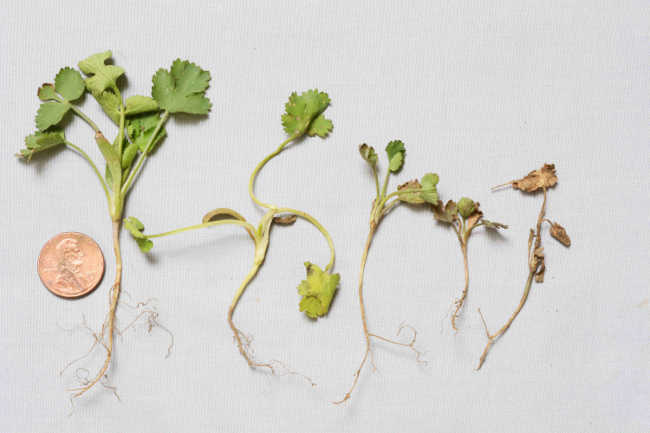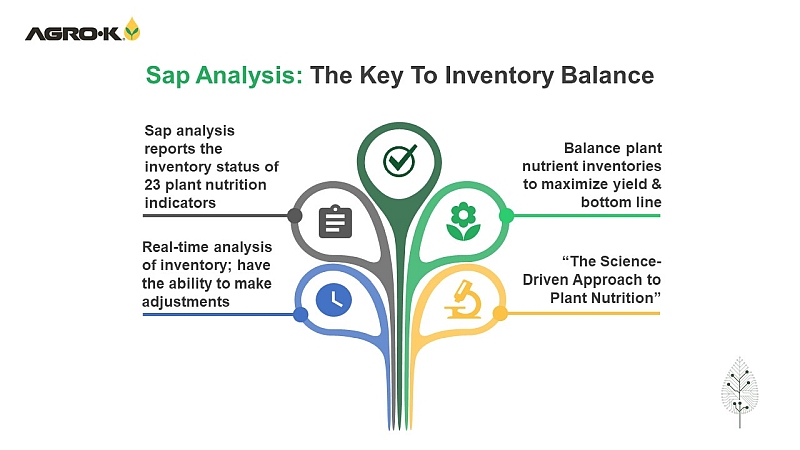Expect The Unexpected With Plant Diseases
Whether or not you are a basketball fan, it’s hard not to notice all the publicity and hype surrounding “March Madness” and the battle for the college basketball national championship. Much of the talk revolves around “the bracket.” The bracket is the initial pairing of teams included in the playoffs, in which the strongest teams with the best records are initially paired up to play the weaker teams with generally less impressive win/loss numbers.
While it’s usually expected that the better teams will win these early contests, on occasion the underdog wins and results in an upset. This unexpected outcome is known as a “bracket buster” (For 2015, condolences if you are a Baylor Bears fan or a Cyclone backer from Iowa State).
We can borrow this idea and apply it to the competition that growers face against crop diseases. Growers plant their crops, deploy disease management tools, and expect to win by ending up with profitable yields. However, unexpected developments can occur and result in biological bracket busters.
Bracket buster 1: Pathogens that overcome resistant crop cultivars
A powerful tool to deal with a plant disease is the selection and planting of cultivars that are genetically resistant to the pathogen. When planting such resistant varieties, growers expect the pathogens to be neutralized and the disease to be a nonfactor.

Cilantro, grown in California for years without any soilborne diseases, has recently been afflicted by Fusarium wilt and Rhizoctonia crown and root rot, as pictured here. Photo credit: Steve Koike
However, the unexpected occurs when pathogens overcome resistance genes in the plants. This happens when variation in pathogen populations or mutation of pathogen DNA results in new strains or races that can infect the previously resistant crop.
For example, many tomato cultivars contain resistance genes that allow them to resist infection by the vascular wilt pathogens Fusarium oxysporum and Verticillium dahliae; however, recent developments of new races (races 2 and 3 of Fusarium; race 2 of Verticillium) are resulting in tomato crop damage.
Grain crops such as wheat are highly dependent on disease-resistant cultivars. Recent occurrences of virulent stripe rust pathogens can cause disease on previously healthy wheat cultivars. The spinach downy mildew pathogen is notorious for rapidly evolving novel races, with race 15 being reported for the first time in 2014.
Bracket buster 2: Fungicides that are no longer effective
Farmers and other professionals apply crop protectants with the reasonable expectation that these products will manage the problem. At times the unexpected occurs and the target pathogens are not deterred by such products. Of course, such a situation signals the development of pathogen strains that are resistant (or insensitive) to fungicides.
For example, the potato late blight organism (Phytophthora infestans) is known to develop resistance to certain fungicides. Both downy mildew and powdery mildew, on a number of different vegetable and fruit crops, readily develop insensitivity to fungicides.
The gray mold pathogen (Botrytis cinerea) of grape, strawberry, and vegetables is so adept at adapting that a particular isolate could be resistant to three or more different products.
Bracket buster 3: A minor disease develops into a serious epidemic
For a number of vegetable crops, a few diseases may show up every season but have little impact on yields and quality. Unexpected developments, however, can turn these minor issues into major headaches for the grower. For example, in a particular year normally “clean” Brassica seed may turn out to be more heavily infested with Xanthomonas, resulting in an unexpectedly high incidence of black rot.
Carrot plantings may have some Alternaria leaf blight every year, but serious outbreaks in multiple fields suggest that seed that year was heavily infested. In spring seasons with higher humidity, the downy mildew pressure can rise significantly in coastal California and appear to be almost uncontrollable.
Also in California, the very warm winter and spring temperatures in 2015 have driven thrips populations to early, high levels, resulting in the unexpected development of early season virus disease in lettuce.
Bracket buster 4: A new disease occurs
A very unwelcome bracket buster is when a totally new disease takes hold of a crop. Farmers face enough challenges in dealing with the known adversary; adding a new foe increases the risk and the chances of losing productivity.
There is much written about citrus greening disease, which is not a new problem worldwide but is a recent introduction and a new serious threat to citrus in the U.S. The leafy green commodity cilantro, successfully grown in California for years without any root or crown disease, now has two problems not previously seen before in the state: Fusarium wilt and Rhizoctonia crown and root rot. For grapes, the virus that causes red blotch disease may not be entirely new to vineyards but is a newly identified pathogen that becomes yet another concern for growers.
Expect The Unexpected
Farming is a competitive business in which growers and companies are competing against other growers and companies for market share and profits. Likewise, we can suggest that growers are in a contest against biological foes. Success is expected when Integrated Pest Management strategies such as resistant varieties, fungicides, crop rotation, and other measures are implemented. Nevertheless, “bracket busters” will occur and our growers must expect the unexpected.










